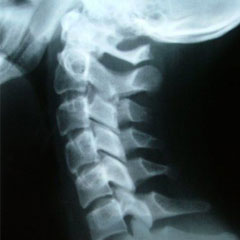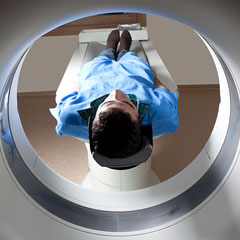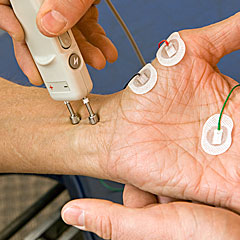
DIAGNOSTIC SERVICES
 Digital Xray
Digital Xray
We utilize state of the art digital xray to evaluate and document musculoskeletal injury. We have the capacity and expertise to do routine and special views, including standing, long leg and full spine xrays. We can incorporate xrays made in other facilities into the patient digital file.
 MRI
MRI
MRI is routinely used to evaluate soft tissue, spine and joint injuries. We coordinate MRI scanning with affiliate imaging centers. When needed we can arrange for MRI with contrast, open MRI imaging and sedated MRI. The physicians of UtahOSIC work directly with a dedicated team of musculoskeletal radiologists to provide the most comprehensive evaluation and documentation of injury.
 CT Scan
CT Scan
CT scan is an important modality which can evaluate bone and spine injury in great detail. We coordinate CT scans with our radiology colleagues to gather critical information used to guide decision making and on occasion, surgical planning.
 EMG/NCS (Nerve Testing)
EMG/NCS (Nerve Testing)
Many injuries can involve the nerves of the arms or legs. Electomyography (EMG) and Nerve Conduction Studies (NCS) are an important method of testing and documenting nerve injury or nerve damage. This testing is conducted by Dr. Bertram in our clinic. The information learned about the nerves is used to guide diagnosis and treatment planning by our team of physicians.
 Fluoroscopy (C-Arm)
Fluoroscopy (C-Arm)
Fluoroscopy, also known as C-Arm, is used to precisely guide the injection of fine needles into the body for rendering treatments. UtahOSIC has a dedicated suite for these treatments. Our suite is fully equipped with the latest in technologies. This allows safe, controlled delivery of medication and treatment to the spine, hip, and other joints as needed. C-Arm is essentially an “xray movie” which the physician can use to effectively see the anatomy and deliver therapies. Most commonly these injections are delivered to the neck and back. This field of medicine is typically called Interventional Pain Therapy.
 Digital Ultrasound
Digital Ultrasound
This technology allows visualization of tendons, muscles, ligaments and joints that are in the arms and legs without radiation and no needles. Using this precise imaging we can effectively guide injections and monitor injuries and healing.
 Diagnostic In-Office Joint Arthroscopy
Diagnostic In-Office Joint Arthroscopy
This brand new technology allows the physician to immediately see into joints, especially the knee and shoulder, making diagnosis and efficiently planning treatment. The scope is very small in size and the procedure typically takes less than 5 minutes and requires no stitches.

